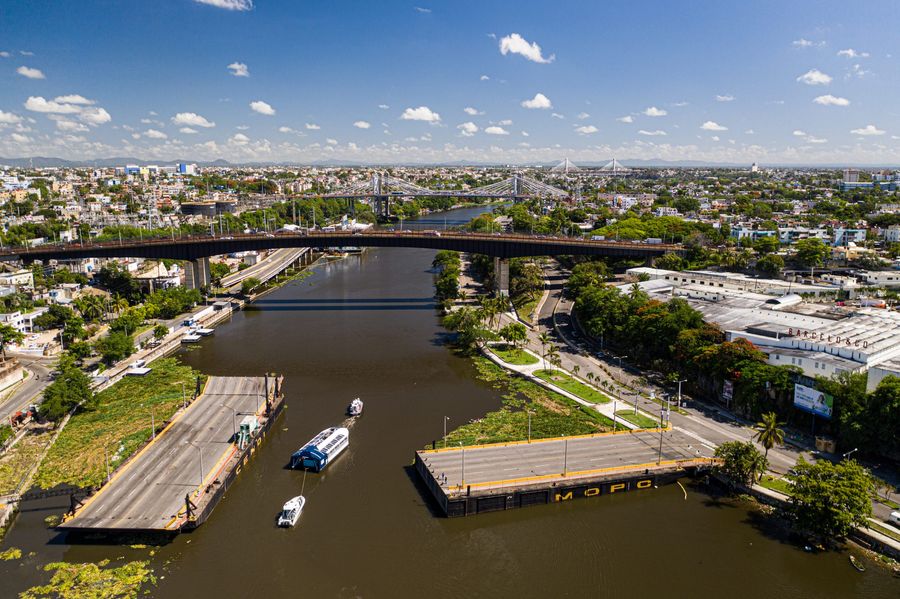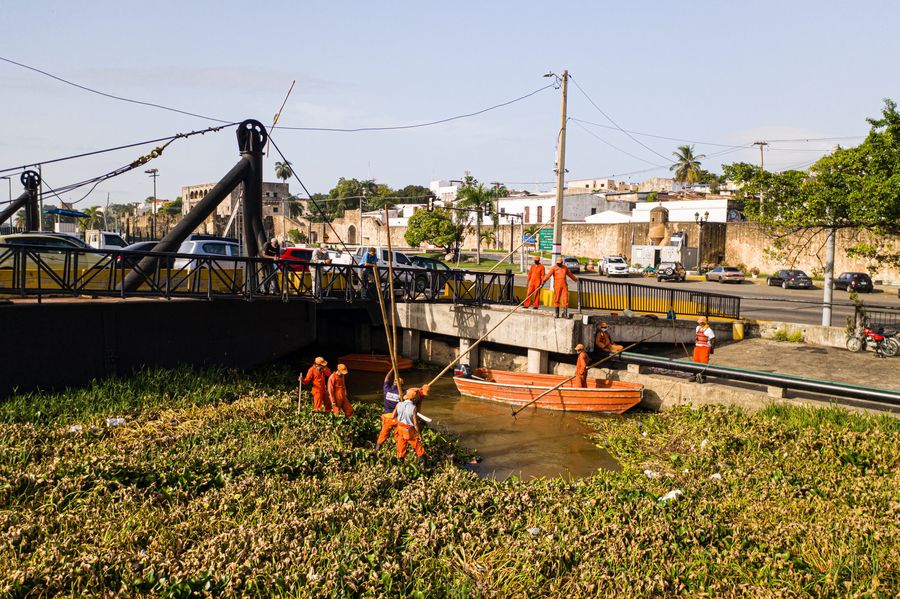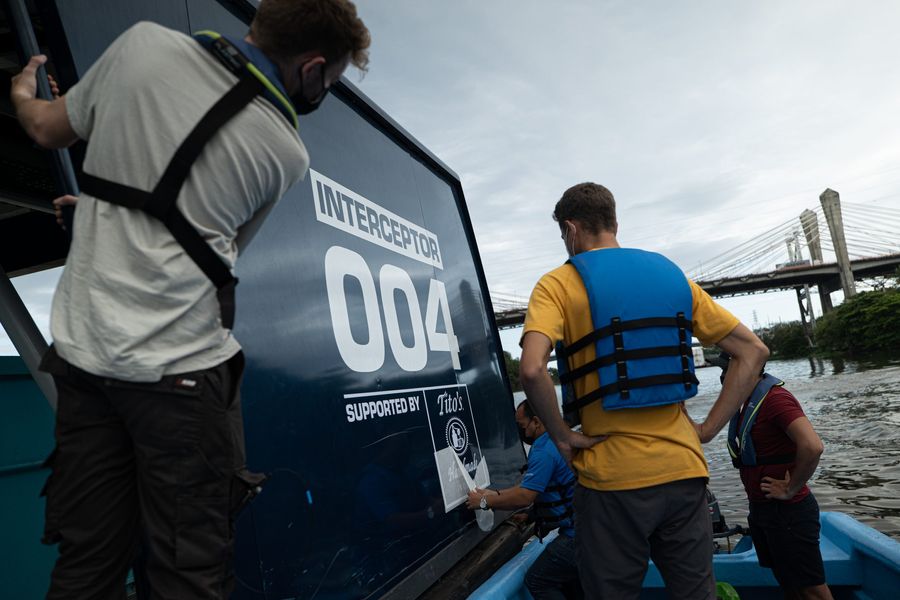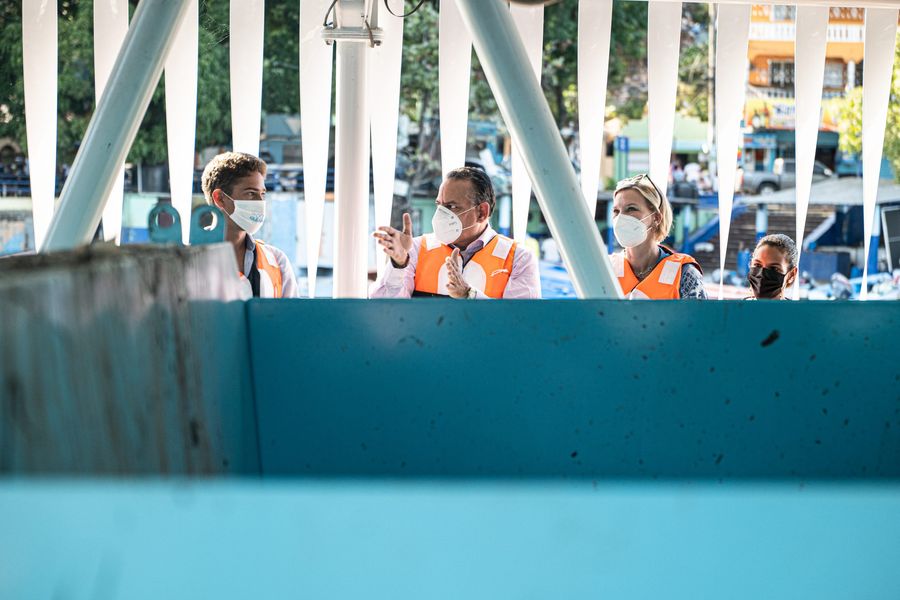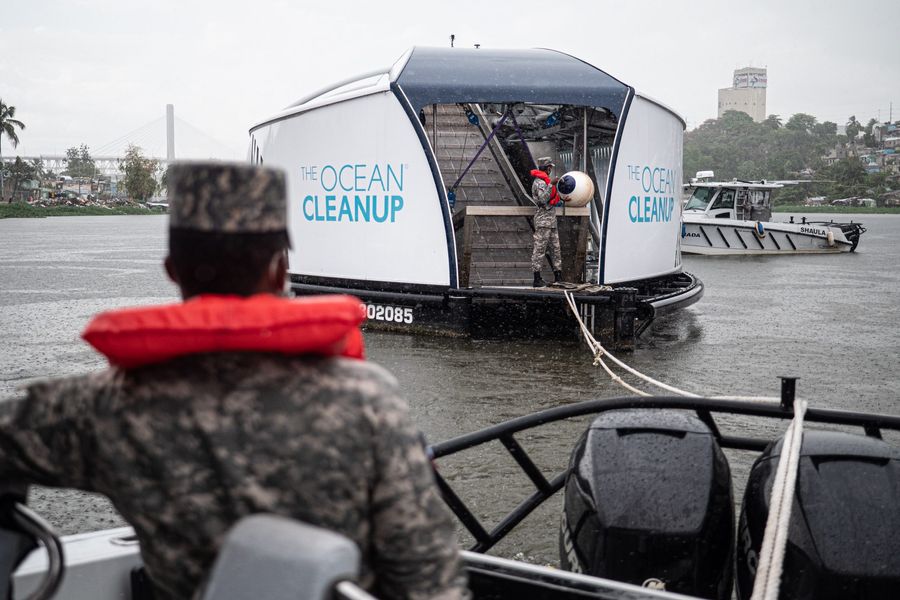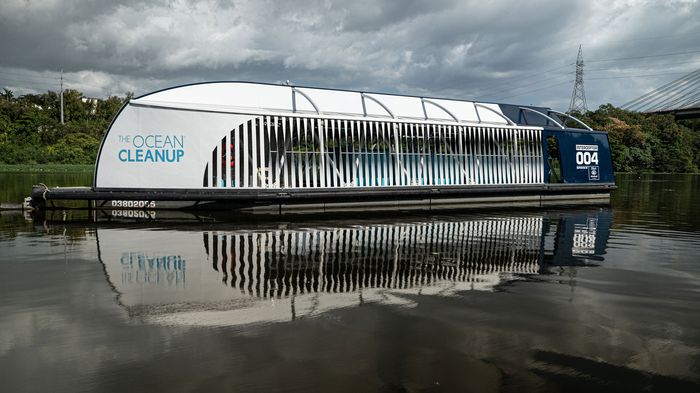
Interceptor 004: The First in the Caribbean
Back to updatesIn February 2020, Interceptor 004, after its debut at the unveiling of our river program weeks earlier, was shipped from Rotterdam to the Dominican Republic. Its planned deployment was paused due to COVID-19 and tropical storms in the region, but as of January 2021, Interceptor 004 has been fully operational in the Rio Ozama. During that time, much has happened.
- Following a six-month delay due to COVID-19, Interceptor 004 was installed in the Rio Ozama in August 2020.
- Five days later, tropical storm Laura caused massive uprooting of water hyacinths within the Rio Ozama. This organic matter enveloped the Interceptor, causing damage to the anchor system, ultimately leading to the decision to halt operations during storm season.
- The Armada de Republica Dominicana (Dominican Navy) is now entirely in charge of operating Interceptor 004.
- A dedicated quay was built to streamline offloading of debris from the six dumpsters.
- An on-site team is now studying the water hyacinths and looking at ways to maximize operations year-round.
Recapping the installation of 004 Interceptor in the Dominican Republic fully assembled, 004 arrived in early March 2020 yet, despite the best efforts of local partners, placement and installation were delayed due to COVID-19 shut-downs. Six months later, 004 was prepared for deployment near the mouth of the Rio Ozama. On August 15, the team tripped the switch and launched operations.
Five days later, the region was hit by tropical storm Laura. Heavy rainfall led to a dramatic increase in river water volume and velocity. A massive amount of uprooted water hyacinths overtook and enveloped 004. Ultimately, the sheer volume of plant debris floating down the river forced a shutdown of the system. The combination of natural and manmade debris rendered additional stress at the anchorage, causing one of the Interceptor’s concrete moorings to bend forward and become unstable. The team then determined to halt operations until after the 2020 hurricane season.
At the start of January 2021, together with local partners, Interceptor 004 was repositioned in the Rio Ozama. Within a week, the system was extracting plastics and other debris from the river.
VALIDATION PHASE AND LEARNINGS FROM SETBACKS
Interceptor 004, the third deployment in what we expect to become a very long list, is part of the Validation Phase of our river project – the period in which we aim to verify the efficacy of our technology in a variety of circumstances and prepare ourselves for scaling up. However disappointing, the challenges of tropical storms and water hyacinth floods are the unscheduled learning opportunities expected in this phase. It is also a period to learn how to best organize around it with local partners. In the case of the Dominican Republic, the project is run by a team from the Dominican Navy and the United Nations Development Programme (UNDP), with strong support from the national government.

EASING OFFLOADING: BETTER WASTE MANAGEMENT
Being within proximity of a refuse offloading station was also considered when choosing the Interceptor’s location in the waterway. Initially, unloading the dumpsters required the barge to be towed to a public-use quay. Thanks to a newly built dedicated offloading dock, the crew is no longer reliant upon queuing up at the public landing. Local operators can unload the containers more efficiently. The Navy is also using its crane to empty the contents directly into the back of the truck for transfer to the local waste management infrastructure.
LOOKING DOWN THE RIVER
A highly visible and much talked about project, the local community is growing more aware of the Interceptor’s results, notably the local fishermen. Many have commented that they frequently find plastic pieces, even intact plastic bags, in the stomachs of the fish. The fishermen have begun to rally around 004, keeping an eye on its operations to ensure continued success. Also, a new task force dedicated to studying the water hyacinth species within the Rio Ozama has been established, and a study has commenced to better understand the conditions of the invasive plants and the habitat unique to the Rio Ozama.
The focus of the operational team is now to determine ways to increase the up-time of the Interceptor and maximize operations year-round.
Preventing more plastic from reaching the ocean is the goal, so the Interceptor 004 team is working to ensure that it continues to remove large volumes of plastics and debris every day. Through a growing stream of partnerships with local leaders and environmental advocates, we move steps closer to closing the tap.


